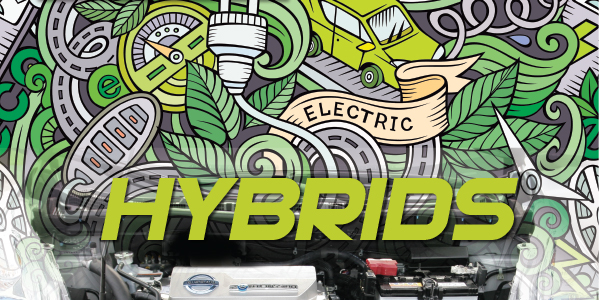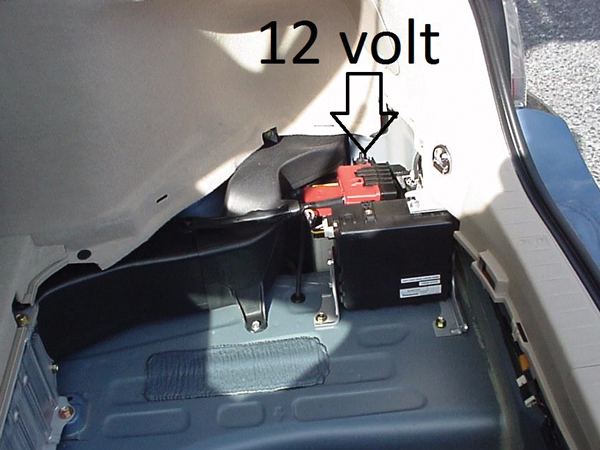Why do hybrids even have a 12 volt battery when the car is already equipped with a high-voltage battery? Those of you with hybrid experience know the answer, but many techs have stayed away from hybrids and have little to no knowledge on the subject.
Today we have plug-in cars, both pure electric and plug-ins with an ICE (internal combustion engine), that are selling and leasing well. There are also many used EMVs (consisting of both types of vehicles) that need service and repairs. This means there is a wealth of opportunity on the horizon for those who know how to service these vehicles.
The lowly lead-acid battery is still an important member of the battery family and needs as much (or more) attention as the high-voltage packs do. Consider this: Each winter, if the temperature hits freezing, a conventional 12 volt battery is tested by Mother Nature. Just one instance of “rur, rur, rur, click, click, click … nothing,” and you know the small battery may be done. But, 99% of the EMVs don’t have a conventional starter motor, so what does the battery have to do when you turn the key or push the “power” button?
Before we answer that, here is a list of duties that all models share with the 12 volt battery: to keep memory alive in the ECUs; provide emergency power for lights and horns; let communication happen on the CAN bus before start up; unlock the doors via the remote (or cell phone app); provide power in the accessory position for radio; and more.
On a conventional car, when it comes time to get the ICE started, the 12 volt battery needs to provide considerable power to the starter motor. It is that last action, the cranking of the engine, that taxes the 12 volt battery the most. And that is why many good technicians make tech-support calls questioning their ability to fix an EMV. Usually between 150 to 200 amps is required to start a conventional 2.0L motor in cold weather, but just 30 amps is needed for an EMV. The cold weather does not test an EMV like it does a conventional car, so it is incumbent on the technician to do so. Absorbed glass mat (AGM) batteries are common and they require special care. The 12.6 battery is becoming more efficient, so look for the 12.8 to become the new normal.
Starting a Hybrid or Plug-in
Once the driver gets into the EMV and starts the process of getting their car to “ready up,” the small battery will be busy. The large high-voltage battery cannot be connected to anything until it is safe to do so, and that takes several steps done in rapid succession. In no particular order, the 12 volt supply allows the ECUs to share any stored codes on a high-speed network, and if any codes are present that would create an unsafe start-up, game over — on comes the orange triangle and a tow truck.
An example would be a high-voltage leak to the chassis that is large enough that it could be dangerous. If no codes prevent the start-up, a high-voltage leak test (loss of isolation) should be done at various times during the process. If you get an “all OK” reading, then the pre-charge relay (sometimes called the bypass relay) is closed in order to test if a main relay (called a contactor) is stuck or welded shut.
Honda typically has only one contactor, but almost everyone else uses two — one on the positive high-voltage cable that leaves the large battery, and one on the negative cable. Once the contactors pass a test, the negative contactor and the pre-charge relay close (in that order), and then for the first time the high-voltage battery pack is connected. A resistor is used in this series so that the high-voltage capacitors are charged carefully and ready to perform two important jobs.
One job is to protect the big battery from any unwanted voltage spikes, and the second job is to add high-voltage power to the system when needed quickly, such as during quick acceleration. The DC-DC converter is also connected to the high-voltage system and is commanded on after the high-voltage system is operating properly. A common problem with the old Honda Integrated Motor Assist (IMA) system is an out-of-balance or degraded high-voltage nickel metal hydride battery. These issues will create a condition that the DC-DC converter cannot tolerate, and the warning light for the small 12 volt battery will illuminate as the DC-DC converter is commanded off. Once the “Ready to Drive” light is on, the small battery is done for that drive cycle. It usually needs little recharging, as it has had no large loads.
How to Prevent Problems
If you own a DLC breakout box, you should get in the habit of connecting the box to the DLC and plugging in your voltmeter to pin 16 and 4. Place the meter where you can see it before you start the car, and look for 11.5 volts or more. If the voltage is low, find the small battery and test, charge or replace it. There is a TSB on the Gen II Prius that a defective 12 volt battery can create a problem when trying to refill the gas tank. Many false codes can be created when a worn out 12 volt battery is left in the car.
A Chevy Volt, for instance, will stop the charger when plugged in if the 12 volt has a bad cell. There are numerous conditions that are created when the source of the problem is a low voltage (and low current) 12 volt battery. Don’t overlook this part of the system.
Did you know that there are about 100,000,000 new 12 volt batteries sold in America every year? Ten million of these are installed in new cars and 90 million are replacement units. Do your part and test every 12 volt battery that shows up in your bay, whether it is in a hybrid, plug-in or conventional car. Replace those that fail, and make sure you know how to test, charge and service a flooded lead-acid, gel or AGM battery.

















